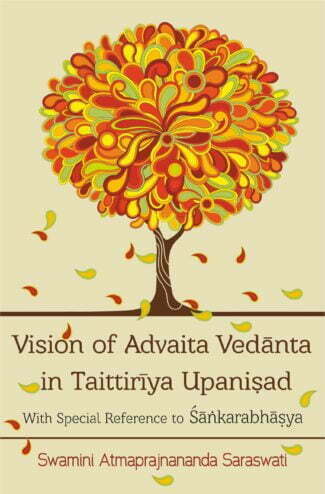Showing 25–26 of 26 results

This book unveils the vision of Advaita Vedanta in Taittiriya Upanishad with special reference to Shankarabhashya in a unique style, detailing the importance of shabda-pramana, along with free translations of three vallis of the Upanishad. It presents the oneness of triangular phenomenon called jiva, jagat and Ishvara from the Advaita Vedanta perspective.
This book unveils the vision of Advaita Vedanta in Taittiriya Upanishad with special reference to Shankarabhashya in a unique style. Upanishads are shabda-pramana, and this work adequately details the six pramanas, which hold the key to understand the significance of shabda-pramana, along with the five shanti-mantras in Taittiriya Upanishad. As the crux, it analyses Shankaras commentary Taittiriya-Bhashyam on Taittiriya Upanishad, enabling one to understand the deep layers of Advaita Vedanta in detail.
The core theme Vision of Advaita in Taittiriya Upanishad discusses the oneness of the triangular phenomenon called jiva, jagat and Ishvara. It delves deep into the method of deciphering the mahavakyas as well. While following closely the source literature, this volume attempts to detail the nuances of Taittiriya-Bhashyam. The approach of navigating the reader to the principal theme of Advaita Vedanta is expected to give him/her a good background. In ensuring this the volume provides relevant citations and informative explanatory notes. More importantly, it across three vallis Shikshavalli, Brahmanandavalli and Bhriguvalli provides free translations of Taittiriya Upanishad.
This elaborate and scholarly book is expected to add great value to students who wish to have a better understanding of the great Indian tradition called Advaita Vedanta.

The Svayambhū Purāṇa , an important text on Nepalese Buddhism, stands as a testament to the rich spiritual and cultural heritage of the medieval Nepal Valley. It brings to life a vivid panorama of legends, each contributing to the religious identity and historical narrative of the region.
The Svayambhū Purāṇa is an important text on Nepalese Buddhism, magnifying the shrine of Svayambhū. Its content is believed to have been delivered as a sermon by Śākyamuni Buddha on the Mañjuśrī Hill.
The volume deliberates on ten key points such as the narrative of the self-generated birth of the Svayambhū; mention of the Vipaśvī, a primordial Buddha; the emergence of a radiant and bejewelled lotus from the dark waters of the lake, foreshadowing the eventual manifestation of the Buddha’s shrine (caitya) at its core; delineation of devotional practices and religious observances; civilization of Mañjuśrī; and so on.
The Svayambhū Purāṇa stands as a testament to the rich spiritual and cultural heritage of the medieval Nepal Valley and unveils the sophisticated nature of Newar Buddhist Sanskrit literary output of the fifteenth century. It brings to life a vivid panorama of legends, contributing to the religious identity and historical narrative of the region. It holds an enduring influence on the religious beliefs and practices of the Newar Buddhist community. This volume, in a nutshell, is an enhancement in the accessibility of the text.
| There are no products |